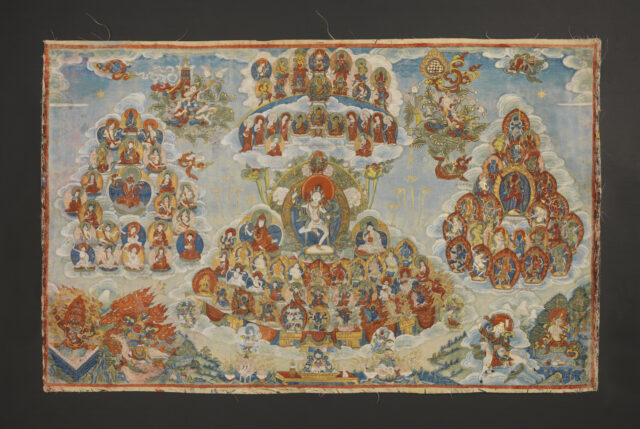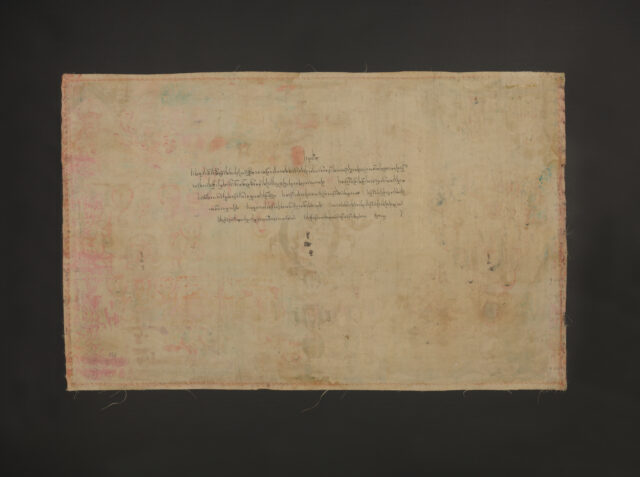Refuge Field with Machik Labdron (1055–1153)
- Location
- Tibet
- Date
- early 20th century
- Material
- Pigments on cloth
- Catalog Number
- C2006.66.11 (HAR 223)
- Collection
- Rubin Museum of Art
- Provenance
- Gift of Shelley and Donald Rubin


A refuge field, or assembly field, is a painting that represents all of the teachers and deities of a particular tradition in a single composition. These paintings are used to accumulate merit through visualization and veneration. Portraits of religious teachers and their lineages act as a focus of devotion for their followers. Another important function is to authenticate the legitimacy of the teachings by tracing the transmission from master to disciple back through history to India, the birthplace of Buddhist teachings.
This painting represents the lineage of female master Machik Labdron who widely transmitted the practice focused on the deity Vajrayogini and even became identified with this deity. Machik is known for spreading the practice of severance (chod), which involves the visualization of cutting away one’s body, and ultimately the ego, as a means of reaching enlightenment.